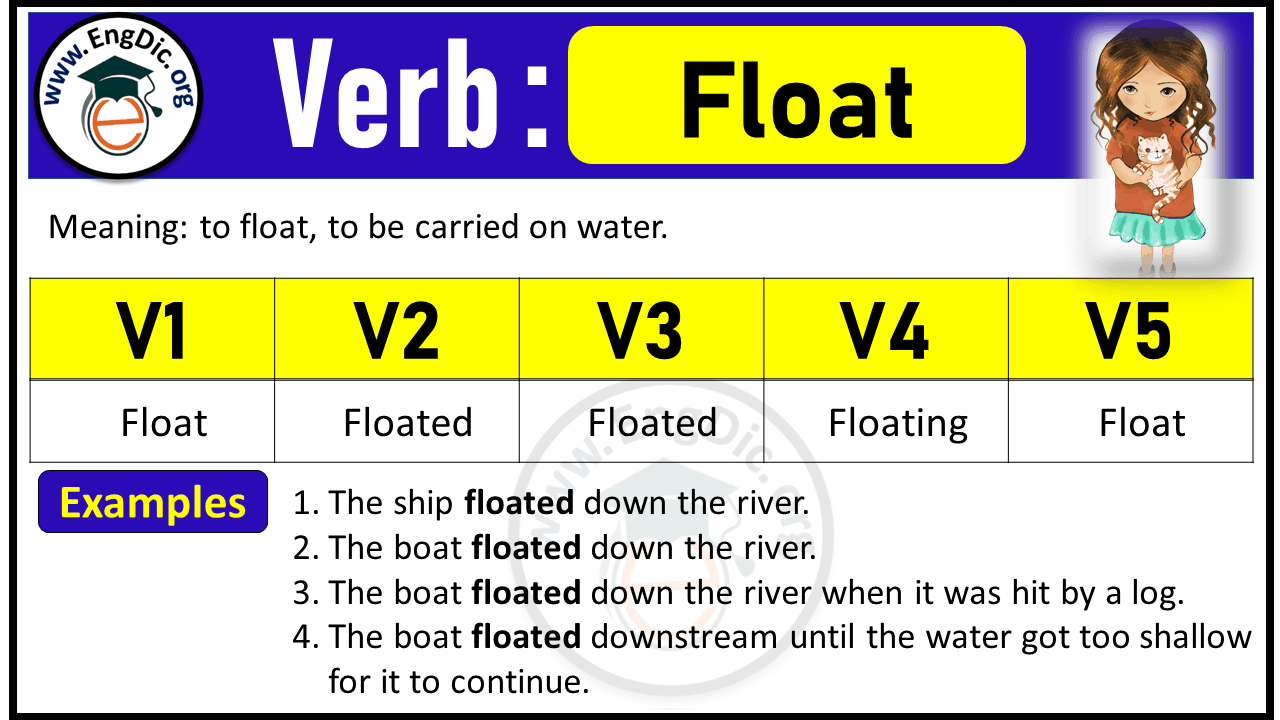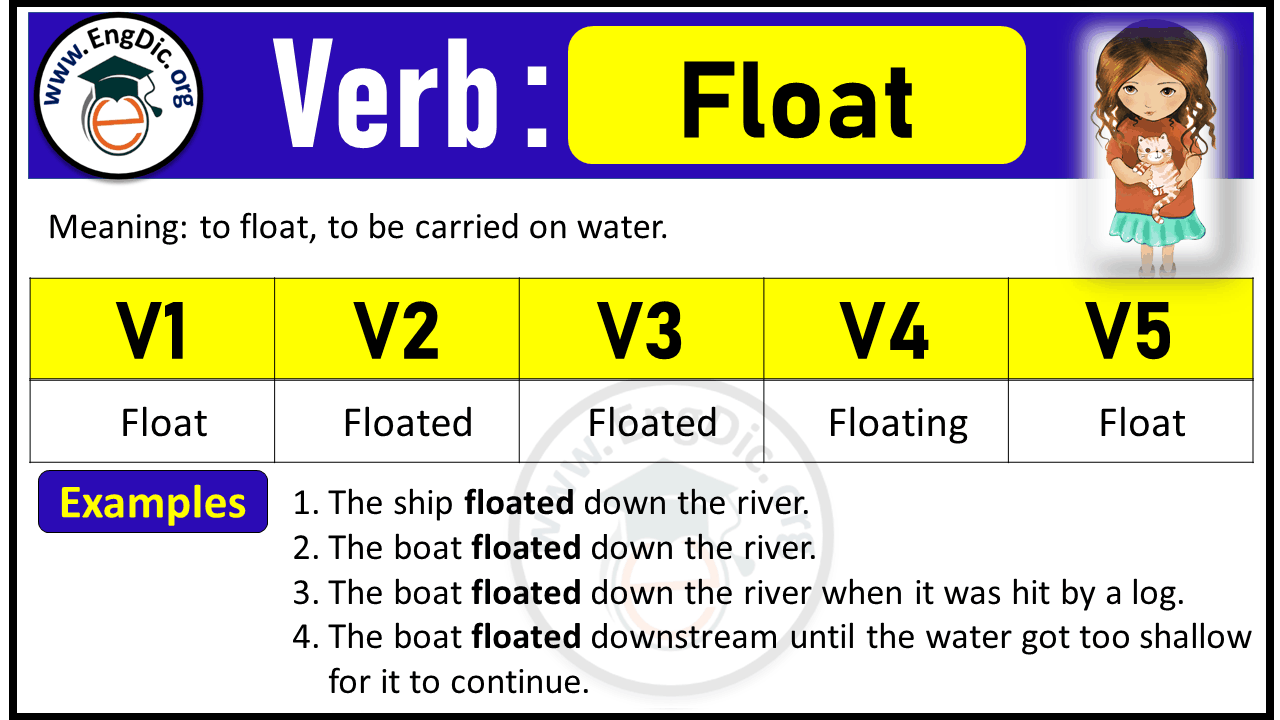Float Past And Past Participle Form V1 V2 V3 V4 V5 Form of Float
Are you curious about the different forms of the verb “float”? Understanding these can transform your grasp of English.
Whether you’re writing a captivating story or polishing your conversational skills, knowing the right verb form is crucial. You’ll discover how the simple past and past participle forms – V1, V2, V3, V4, and V5 – can enhance your language prowess.
Imagine speaking or writing with confidence, knowing you’re using verbs correctly. This knowledge isn’t just for language enthusiasts; it’s for anyone wanting to communicate more effectively. Ready to dive in and elevate your English skills? Let’s explore the world of “float” and see how it can buoy your language to new heights.

Credit: engdic.org
Float In Past Tense
The word floatis a verb. In the past tense, it changes. The past formof float is floated. This means something was on water or air before. Floatedis also the past participleform. We use it with “has” or “have”. For example, “The boat has floatedaway.”
Here is a table to show the forms:
| Base Form (V1) | Past Simple (V2) | Past Participle (V3) | Present Participle (V4) | 3rd Person Singular (V5) |
|---|---|---|---|---|
| Float | Floated | Floated | Floating | Floats |
In present participle, it becomes floating. This is used in continuous forms. For example, “The leaf is floatingon the pond.” The third person singular form is floats. For example, “He floatson his back.”
Float In Past Participle
The word floatis an action. In English, verbs change forms. Past participleis one form of a verb. For float, the past participle is floated. This means it has already happened. The word “floated” can be used in sentences to show past actions. For example, “The boat has floateddown the river.” This sentence shows the action is complete. Other forms of float include float (V1), floated (V2), floating (V4), and floats (V5). Knowing these forms helps in writing and speaking. It makes sentences clear and correct. Using the correct form is important. It helps us understand the time of action. Practice using these forms in sentences. It improves language skills.
Variations Of Float Forms
The word “float”has many forms. In its base form, it is “float”. For the past tense, use “floated”. The past participle is also “floated”. In continuous tenses, we say “floating”. The simple present forms are “floats”for he, she, it, and “float”for I, you, we, they.
| Form | Example |
|---|---|
| Base | float |
| Past | floated |
| Past Participle | floated |
| Continuous | floating |
| Simple Present | floats |

Credit: engdic.org

Credit: englishgrammarhere.com
Conclusion
Understanding the forms of “float” enhances your English skills. Remember, “float” is the base form. “Floated” serves as both past and past participle forms. Use “floating” for continuous actions. Learning verb forms is crucial in language mastery. Practice daily for improvement.
It builds confidence in writing and speaking. English verbs can be tricky. But with practice, you get better. Keep exploring more verbs. Your language skills will grow. Enjoy the journey of learning. It is rewarding and fun. Keep floating through your English studies.
Stay curious and persistent. You’ll see great progress over time.






